It’s spring! It’s finally spring! I know it’s spring because a) there’s a big pile of marking on my desk to be done, b) it’s no longer pitch black outside when I get up, and c) our resident groundhog has made his first appearance on the back deck. The convergence of those three things can only mean SPRING. And one of my favourite spring rituals is to dust off my modest but beloved collection of ornamental Green Men, and start placing them around the house and back yard.
I blogged about the Green Man in December, and looked at a particularly vivid example of him in Ottawa, on parliament’s East Block. Although he’s common in Victorian architectural ornament, his real heyday was the Middle Ages – especially the Gothic period.
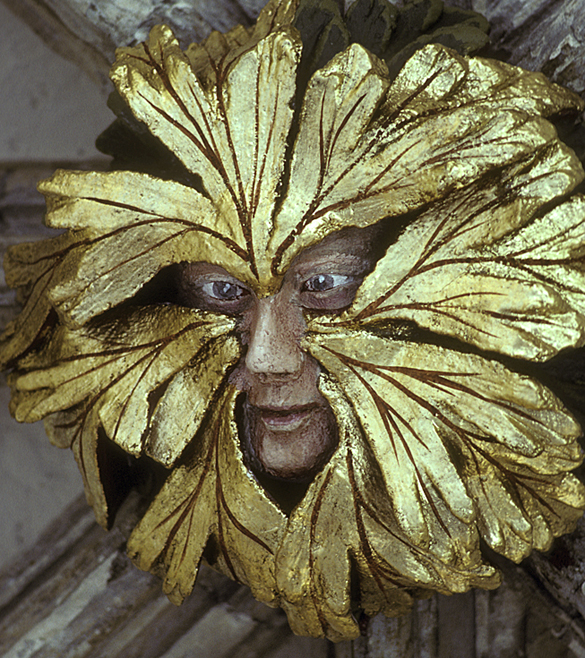
A Gothic Green Man from the cloister of Norwich Cathedral
The Gothic world is full of Green Men. Sometimes he wears a foliate mask, as in the beautiful example above from Norwich. Other times he seems to be disgorging foliage as in the two examples below from Exeter and Ely Cathedrals.
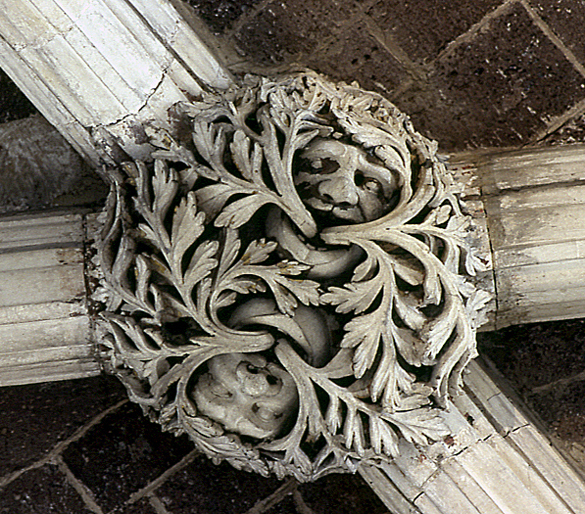
A Green Man from the retro-choir of Exeter Cathedral
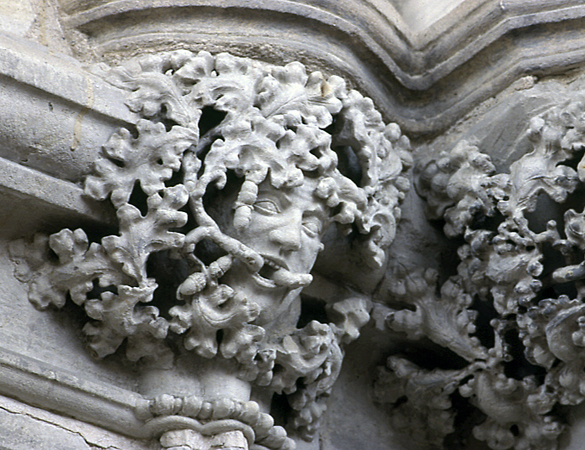
Another from the Lady Chapel of Ely Cathedral
But what did all these Green Men mean? The truth is we don’t know. He is shown in the thirteenth-century sketchbook of Villard de Honnecourt, but identified only as a tête de feuille (thanks Villard, but we could see that much for ourselves). Was he a pagan leftover who lay forgotten for generations, then for some reason was suddenly rediscovered in the thirteenth century? Was he an emblem of a newly found connection with the natural world, perhaps inspired by St. Francis’s joyful outpouring of love for the whole of creation? Was he connected to the thirteenth-century fashion for highly naturalistic foliate carving – a kind of paean to a new muse?
The greatest concentration of Green Men I have ever seen is in the chapter house of Southwell Minster. He appears here in all of his guises – the foliate mask, the disgorger, and sometimes just as a delicate face peering wistfully through the leaves. And it may not be coincidence that he is surrounded by some of the most stunningly naturalistic leaf carvings in the whole of medieval art.
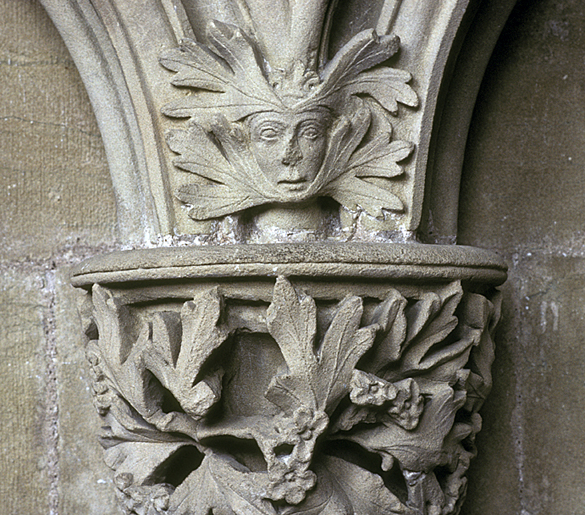
Foliate mask at Southwell Minster, ca. 1290.
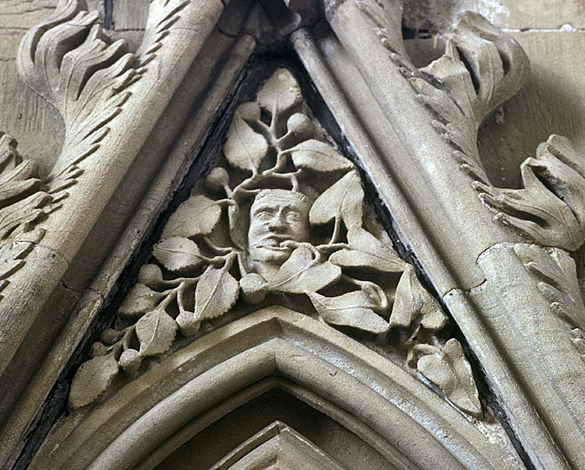
Disgorging Green Man, Southwell Minster.
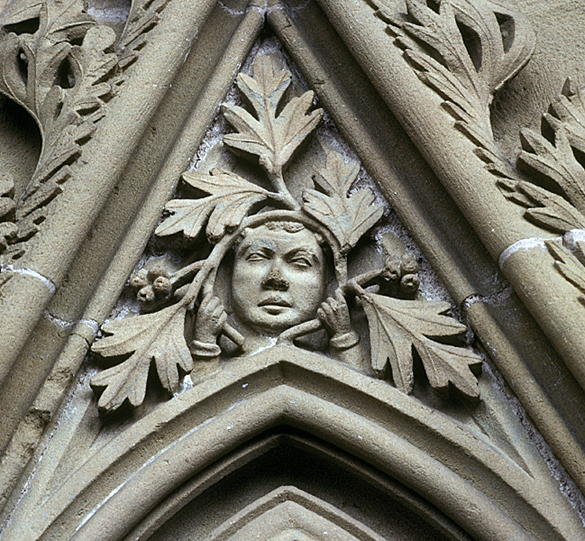
Peering through the leaves of Southwell.

Buttercup, Southwell Minster.

Vine leaves, Southwell Minster.
The chapter house at Southwell is like a stone psalm in praise of the beauty of nature. I can’t explain it. But every year, as the glacier in my back yard recedes and the trees and flowers once again invite me out to play, I think I can feel it. And then I dust off my Green Men, because they give me a tangible expression of that feeling. They seem to say things that I don’t understand well enough to say for myself.
Happy spring!